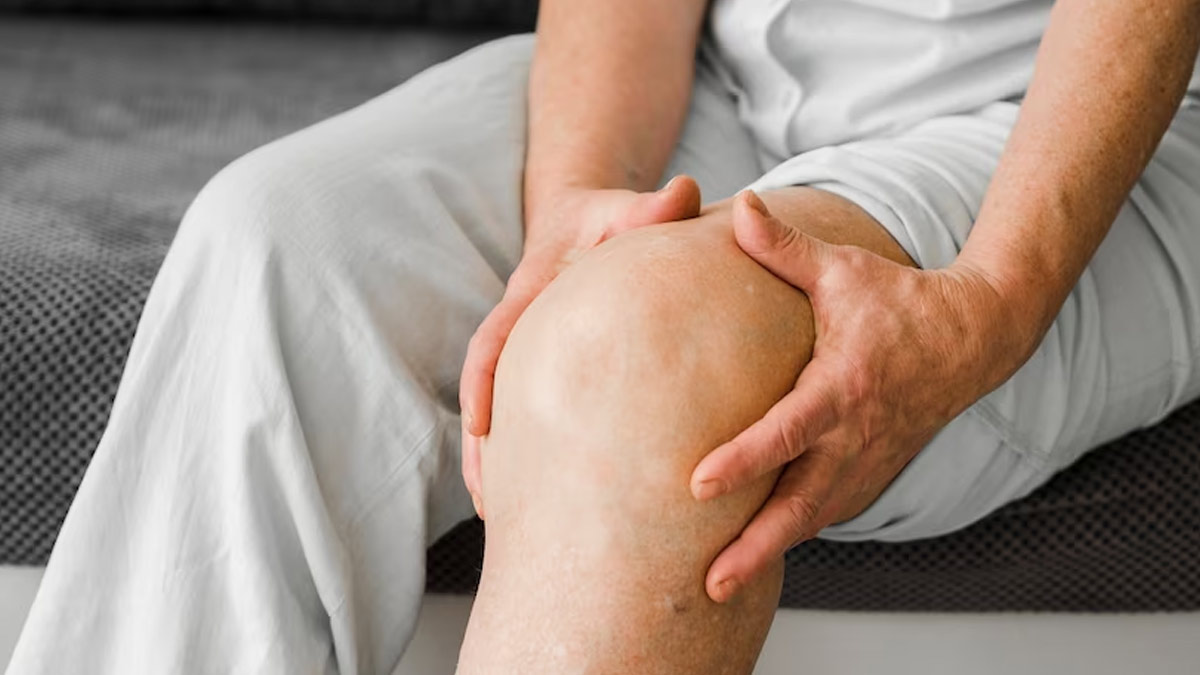
During summer, the outdoor temperatures typically soar, enticing people to indulge in beach activities. However, they often overlook the potential repercussions of extreme heat. It can cause health problems, such as heat stroke, heat exhaustion, and dehydration. Apart from these health issues, many people also suffer from swellings in their hands and feet. To know why some people are prone to this swelling during summer, we spoke to Dr Kamalesh A, Consultant Physician, Yashoda Hospitals, Hyderabad.
Table of Content:-
What Is Oedema?
Dr Kamalesh said, “Oedema is a medical term used to describe swelling caused by the accumulation of excessive fluids in tissues. This type of swelling can occur in various parts of the body and has multiple potential causes.”
"Oedema commonly affects body parts such as the hands, legs, ankles, arms, and feet, resulting in swelling in those areas," he added. While oedema can affect anyone, pregnant women and older adults are at a higher risk of developing it, added the doctor.
What Is Heat Oedema?

"Heat oedema is the term used to describe the condition when swelling occurs as a result of prolonged exposure to heat," added the doctor. "During summertime, when outdoor temperatures increase, individuals often flock to the beaches, spending time in the sun's rays. However, the potential repercussions of extreme heat are often overlooked," he added.
"The elevated temperatures prompt the dilation of blood vessels, leading to the leakage and accumulation of fluid beneath the skin, ultimately causing swelling," explained Dr Kamalesh.
Also Read: What Causes Fluid Buildup In The Lungs? Here's Everything You Need To Know About Pulmonary Oedema
Causes Of Heat Oedema
According to Dr Kamalesh, heat oedema occurs as a result of the body's response to hot temperatures, where peripheral vasodilation is employed to regulate normal body temperature. Vasodilation refers to the widening or opening of blood vessels to enhance blood flow to the lower extremities. Moreover, the skin expels a significant amount of water through sweating when exposed to elevated outdoor temperatures.
Explaining further, the doctor mentioned that when there is an increase in blood flow to the organs, the small capillaries in the body release fluids into the intercellular spaces. Typically, these fluids are effectively drained by the lymph nodes. However, complications arise when there is an excess of fluid and the lymph nodes are unable to keep up with its clearance. Consequently, the accumulation of fluid occurs in various body parts, such as the hands, legs, arms, and ankles, leading to heat oedema.
According to Dr Kamalesh, oedema is mostly seen in the following conditions:
Lack of Acclimatisation
According to Dr Kamalesh, individuals who are unaccustomed to hot weather or have limited exposure to high temperatures are at a higher risk of developing heat oedema. The doctor explained that this is due to their bodies being unable to tolerate even minimal heat, a condition referred to as a lack of acclimatisation.
Prolonged Sitting Or Standing In Hot Weather

Dr Kamalesh pointed out that extended periods of sitting or standing in hot weather increase the likelihood of developing heat oedema. He said, “This is due to the weakening of the leg veins, causing water to accumulate in the feet as a result of gravity, leading to oedema.”
Also Read: Diabetes Patients Are More Inclined To Diabetes Macular Edema And Heart Failure
Medications
"Certain types of medications, such as antihypertensive drugs, Non-Steroidal Anti-Inflammatory Drugs (NSAIDs), steroids, oestrogen, and antidiabetic drugs, can also increase the chance of heat oedema," said the doctor.
Signs Of Heat Oedema
"The signs and symptoms of heat oedema include swelling or puffiness in one or both arms or legs, stretched and shiny skin," said Dr Kamalesh. He added that when you press the swelling, it leaves a dent or a dimple, known as pitting oedema. "The patients might experience difficulties in walking if their legs are swollen. Sometimes, it is accompanied by pain in the affected body part," he explained.
How To Prevent Heat Oedema?

Heat oedema usually subsides after some time. However, the following methods help to treat this condition.
- Elevation of limbs
- Compression stockings
- Take a break and avoid standing for prolonged periods in hot weather.
- Limit salt consumption
- Stay indoors
- Drink water
- Maintain a healthy weight
- Maintain physical activity
- Take medications, mainly diuretics which help to remove the excess fluids but should be consumed only on the advice of a physician.
- Quit Smoking
Conclusion
If the condition is left untreated for long, the fluids accumulate in other organs, such as the lungs, liver, heart, and brain. You should consult your doctor to know more about heat oedema and the ways to prevent it.
[Disclaimer: The information in this article is provided by a registered medical practitioner. However, we recommend you consult your healthcare provider for a thorough diagnosis and treatment.]
Also watch this video
How we keep this article up to date:
We work with experts and keep a close eye on the latest in health and wellness. Whenever there is a new research or helpful information, we update our articles with accurate and useful advice.
Current Version